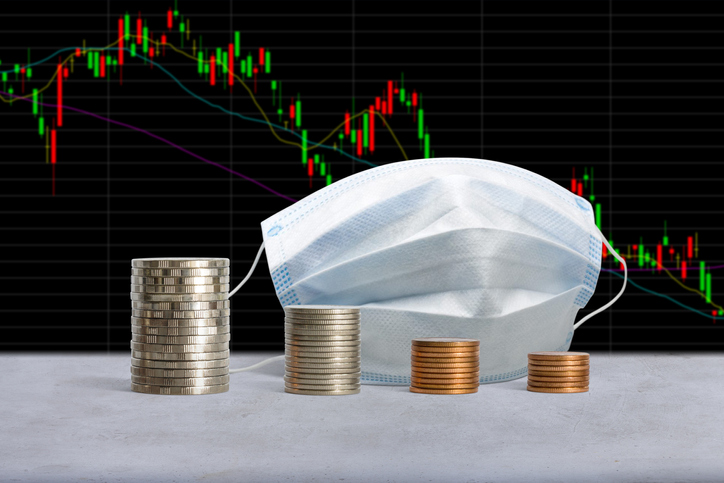How has the coronavirus affected the currency market?

With all that has been going on over the past few weeks with lockdowns, figures on the infected and who should be self-isolating, you would be forgiven for not following the currency markets over this period as you usually would.
The global economy will suffer massively because of the coronavirus outbreak and volatility in the currency market is highly likely. Now more than ever is a time to ensure you are minimising risk and your funds are in the currency you need them to be in. Waiting for the market to improve in your favour is a risk at the best of times, but right now the strategy needs to be centred around risk management, and getting things done now in case they get far worse.
Please utilise the expertise of our team to ensure you have a risk management strategy in place and we can help you navigate through this unpredictable and unique period.
Also, you can stay up to date with what is happening in the currency market by subscribing to our free Daily Market Commentary, but to get you up to speed here is our breakdown of what effect COVID19 has had on the currency market so far.
GBP
The pound has been particularly volatile since the start of March when the number of cases of COVID-19 in the UK began to rise. During March the pound hit a high of 1.3187 against the dollar and lows of 1.1435, the lowest levels in 30 years. All this in a turbulent 10-day spell.
Likewise, against the euro there has been plenty of movement, GBPEUR reached 1.0533 on the 19th March, the lowest level in over 10 years. Sterling has seen improvement over the last week of March, but why has it been so volatile?
There’s not a simple answer, but the significant fall for sterling was driven mainly by a lack of confidence. At times of uncertainty, people often move into safe currencies such as USD, CHF, and JPY, weakening other currencies such as the pound. On top of this, there had been some doubt over the approach that the UK government initially took in combating the Coronavirus, weakening the currency further.
It hasn’t been all bad for the pound, however, throughout March strong gains were made against the Australian dollar, Canadian dollar and New Zealand dollar, since these commodity-based currencies have been struggling. Furthermore, Sterling has started to climb back against the US dollar and the euro. Part of this boost came last week when the Bank of England decided not to cut interest rates further, but the currency could fall again if rates are cut later down the line.
Ultimately, the pound tends to be vulnerable if there is significant damage to the global economy as it is a currency dependent on global trade. Don’t be surprised by more volatility over the coming months.
USD
The Coronavirus outbreak has caused mixed reactions for a US dollar perspective, typically seen as a safe currency, some investors will see the dollar as a safe place to be during this time.
It may have initially fallen against the Japanese yen at the beginning of March but it has been recovering ground ever since, before leveling off throughout the last week of the month. The dollar has also strengthened against the Mexican peso, Indian rupee, and currencies that have been negatively affected by the recent drop in oil prices.
While the dollar has fared ok so far, the situation in the US has been developing very quickly. As of writing the US has now overtaken China as the country with the most confirmed cases of COVID19, while also facing criticisms for its lack of testing.
From an economic standpoint, the US has already cut rates to almost zero and launched a $2 trillion stimulus package. USD is certainly one to watch as there may be movements depending on how the situation develops over the coming weeks.
EUR
Europe has been massively affected by the coronavirus outbreak with the World Health Organisation (WHO) labelling it as the epicentre of the virus, with Italy, Spain, France some of the worst countries affected globally. Somewhat oddly however, the euro has been one of the stronger performing currencies during the crisis, despite being a currency that typically falls in times of economic stress.
Initially, the euro made gains as the outbreak of the coronavirus began to spread outside of China. As a result of the European Central Bank’s very low-interest rates, many investors had negative bets against the euro when these positions were closed the currency rose.
Despite this initial rise, the expected damage to the eurozone economy is huge. The euro has fallen significantly in comparison to the dollar during March, hitting 1.0657, the lowest rate in almost three years. There has been some recovery over the last week or so, but expect that the longer this crisis goes on the more damage European economies will take.
TRY
Most countries have ordered citizens to stay at home, however Turkey, while introducing strict measures have stopped short of a full lockdown. In part, this could be due to the fact that the economy is struggling and fears that a full lockdown could put the country on the brink of a recession.
For Turkey, as with other countries, the coronavirus has already damaged tourism and exports and is likely to continue to do so over the coming months. So far in 2020, the Turkish lira has fallen almost 10 percent against the dollar, and efforts in January and February to support the lira against USD have left Turkey with little in the way of foreign exchange reserves.
The Turkish lira is weak at the moment across the board and has been on a downwards trend since August/September 2019 against the pound, dollar and euro. On the 2nd April, the lira was at its weakest against the pound since September 2018 as GBPTRY hit 8.34397.
On the other hand, a weaker lira could present much-needed support for exports. Despite China being the initial COVID-19 epicentre the yuan is still relatively strong against the pound. Throughout the first two months of 2020, GBPCNY remained between highs of 9.2370 and lows of 8.9220. However, since mid-March, the highest level it has reached is 8.8558, due to both the pound’s recent weakness and improvements from the yuan.
There is of course still so much uncertainty around the coronavirus situation and how it will impact different markets globally, but if China can begin to get back to normal and the yuan continues to rise, it may be that business turn to Turkey for their manufacturing and materials to cut costs.
It all depends very much on ease of movement, as if China gets back to some normality operationally, while the rest of the world is in lockdown, keeping manufacturing and imports there may be costly but a necessity. It remains to be seen how the situation will develop in Turkey but added exports would certainly be beneficial for their fragile economic situation.
JPY
Following the 30% drop in oil prices in early March, the Japanese yen surged against the dollar to 0.0098, levels not reached since 2016. Many investors have struggled to assess the true economic damage that the coronavirus has had so far prompting significant movement into safe-haven currencies. However, Japan’s exports were damaged due to the Yen’s strength and as a result, it has weakened against the dollar, euro and pound in the last couple of weeks.
The Japanese government is trying to reduce the economic impact that the coronavirus will have but recent GDP data have reduced confidence with more investors thinking that the chances of a recession are increasing.
As the Japanese economy will struggle more if the yen strengthens, the likelihood of it reaching the heights of early March is unlikely. However, with JPY considered a safe currency, don’t be surprised if more investors move to it if the outlook for the global economy becomes bleaker.
AUD
Commodity currencies such as the Australian dollar have struggled since China first detected the Coronavirus. On the 1st January 2020, the AUD/USD rate was at 0.7018 but has yet to reach the same heights since, dropping off slowly throughout January and February before plummeting in mid-March to lows of 0.5530, its lowest level in over 10 years. It has been a similar story for the Australian dollar against the pound and the euro, falling slowly throughout 2020 before significantly dropping off in mid-March.
So why has the currency struggled? AUD is a currency that is linked to global growth, as a result when the global economy weakens the Australian dollar is likely to follow. Furthermore, as there is such a lack of confidence in the market, investors have been moving to safe currencies for the time being. Combine this with Australia’s export connections with China and the picture starts to become clearer as to why 2020 has been so rough for the Aussie dollar.
It should be said however that the AUD has regained some ground against the US dollar and the euro in the last week or so, but is still fairly low against the pound, ending March at 0.4914.
Ultimately, further losses in commodity prices are likely to damage the Australian dollar further, as is the impact of the coronavirus on the global economy.
If you have any questions about the above or about how we can help you with your international payments and risk management, please call us on +44 (0) 20 7738 0777. Don’t forget that you can utilise our services through your online platform which is available 24/7.

